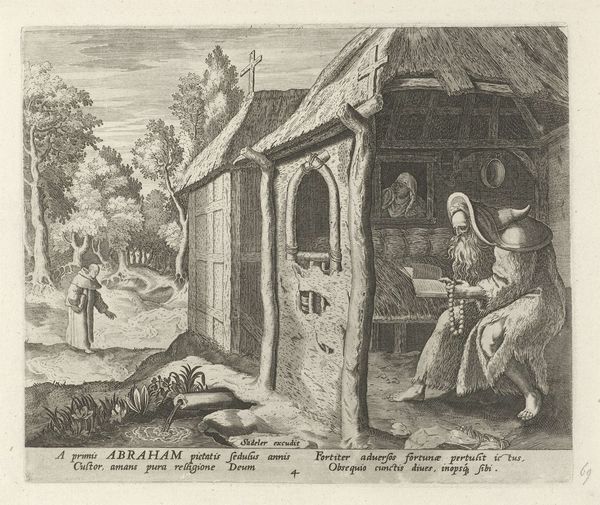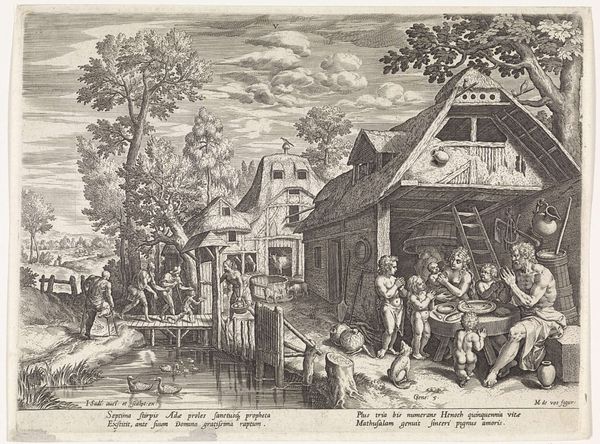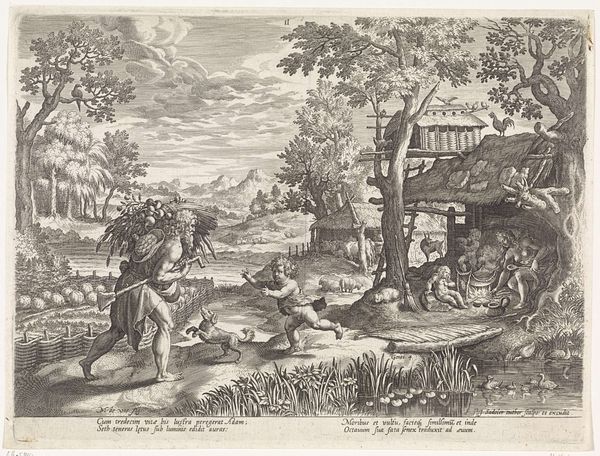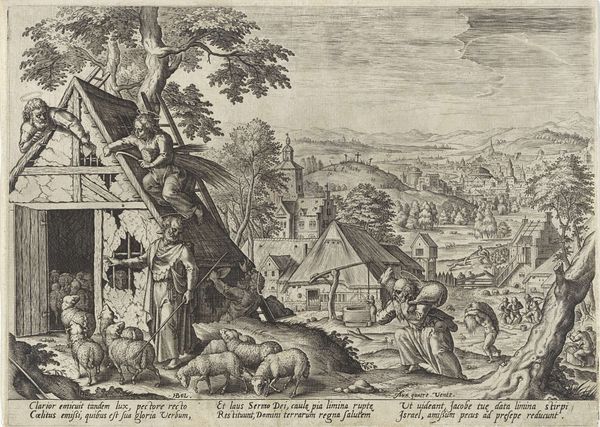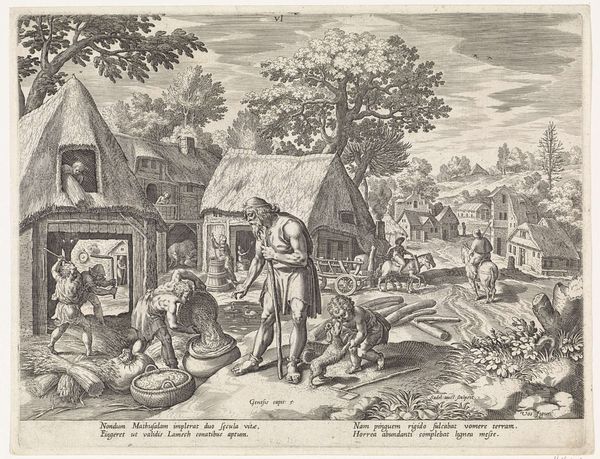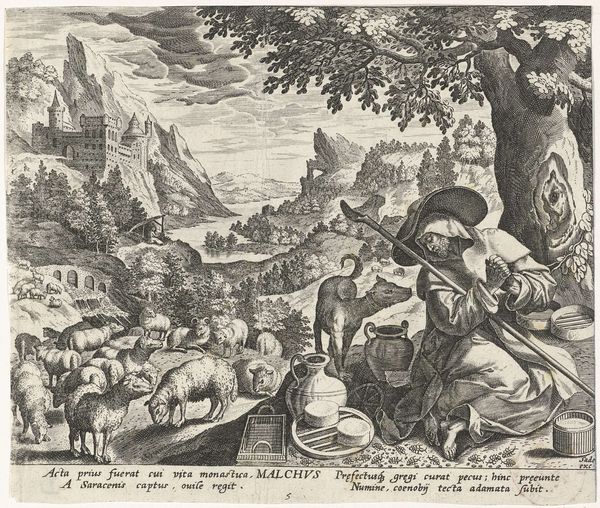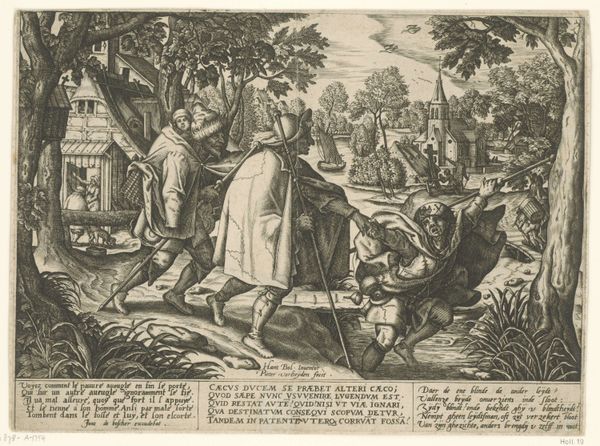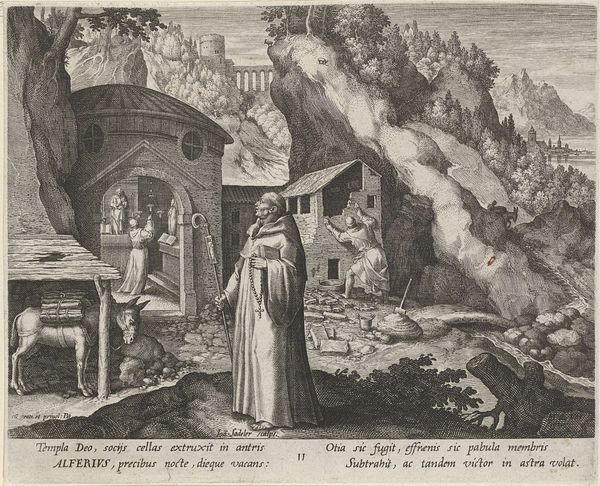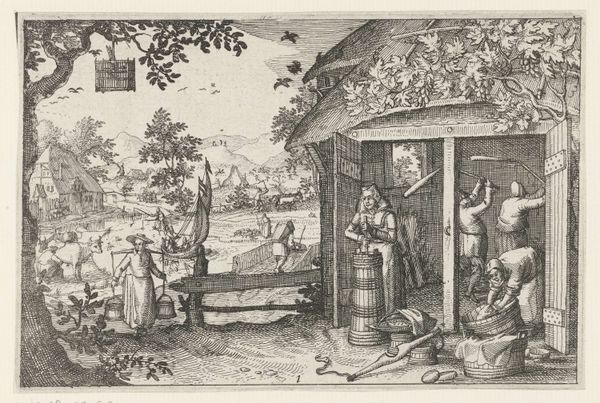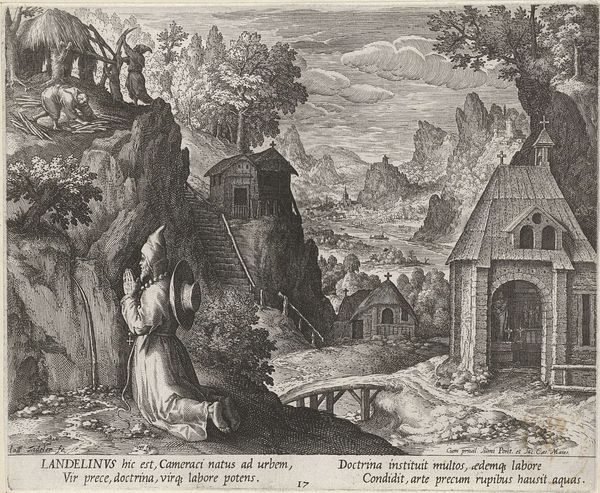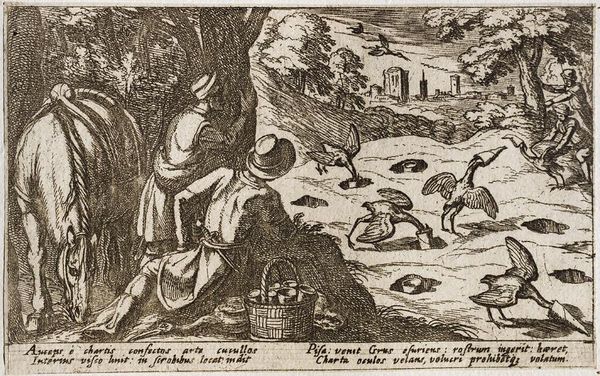
print, engraving
#
pen drawing
# print
#
pen illustration
#
old engraving style
#
landscape
#
mannerism
#
engraving
Dimensions: height 172 mm, width 197 mm
Copyright: Rijks Museum: Open Domain
Curator: This engraving, "Origen de kluizenaar in de Nitrische woestijn," or "Origen as a hermit in the Nitrian Desert", created sometime between 1583 and 1588 by Johann Sadeler I, really throws us into a distant world, doesn’t it? It is now housed at the Rijksmuseum. Editor: It does. My initial sense is of profound labor and a quiet sense of melancholy. The fine lines carve out such tangible textures of the landscape, the dwellings, the hermit's garments, and the instruments for craftsmanship... It's dense and teeming, yet conveys a sense of solitude. Curator: The landscape itself holds deep symbolic value. Notice how the hermit's actions take place amongst various humble buildings. Each structure seems hewn organically from the rocky terrain. We have to understand it's also acting as a vessel for a kind of visual sermon. Origen’s withdrawal into the desert symbolizes spiritual purification and the pursuit of divine knowledge. Editor: Precisely! And observe the materials utilized. Everything around this monk has a directness, wood and stone seemingly gathered directly from the environment for his lodgings. And it’s the texture rendered from an engraver's mark. Consider the laborious craft required to render this image – it mirrors the ascetic dedication of the hermit himself. The production echoes the subject's dedication to labor and manual toil. Curator: Indeed. Even the very act of meticulously engraving mirrors the dedication Origen shows to a life of rigorous spiritual discipline. Furthermore, the inclusion of the beads, tools and open book signal specific avenues through which the faithful find enlightenment: devotion and scholarly learning. The landscape becomes an external manifestation of the internal journey. Editor: Right. These printed images were commodities traded and consumed within early-modern devotional culture, so that they held intrinsic exchange value. And each image of monks and hermits reinforced ideals of labor, productivity and isolation, influencing wider audiences in their pursuit of earthly salvation and virtue through production and renunciation of leisure. Curator: Such a fascinating collision of practical work and religious fervor presented through careful imagery! Editor: It truly allows one to consider the intersection of piety, material, and meaning.
Comments
No comments
Be the first to comment and join the conversation on the ultimate creative platform.

